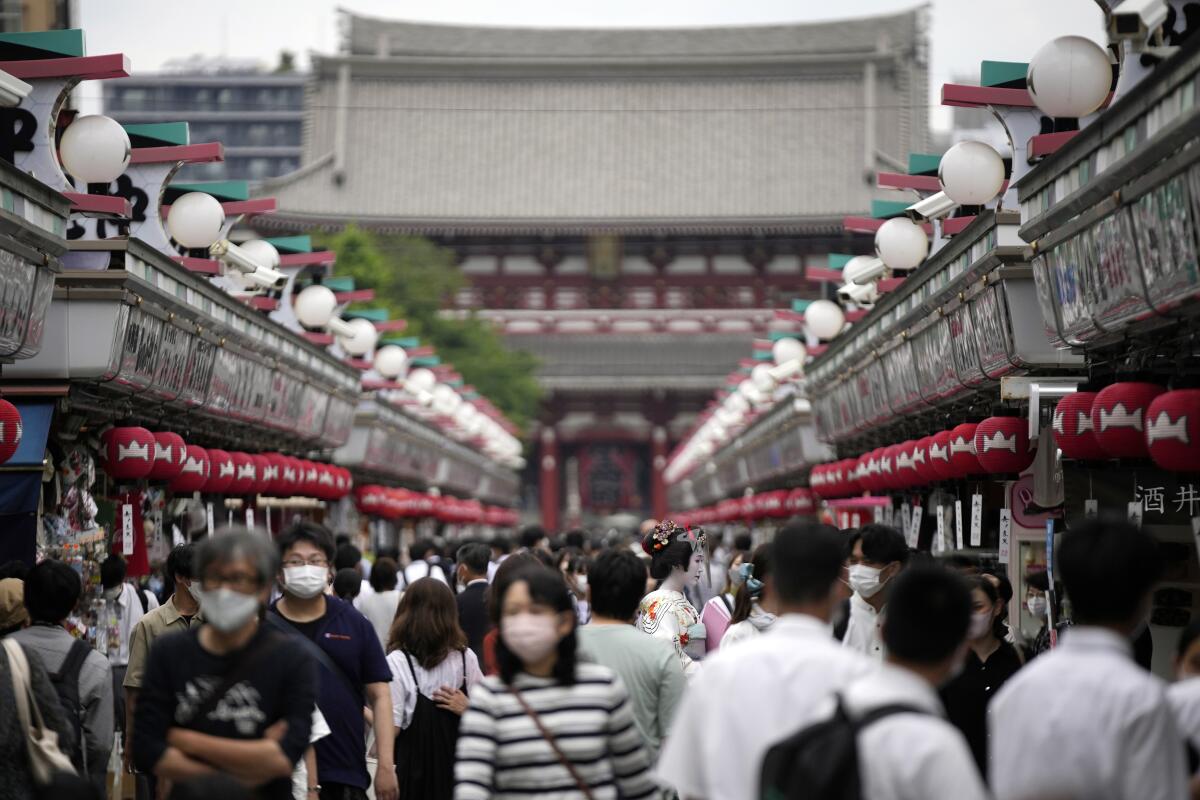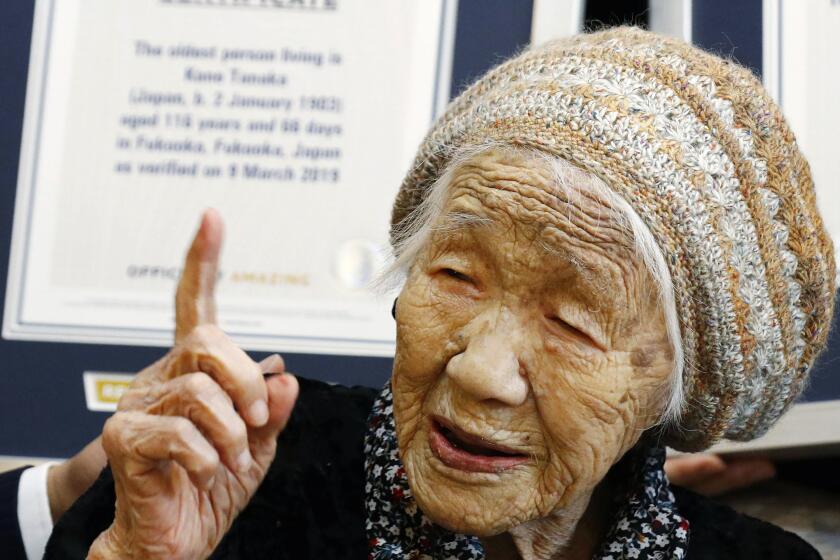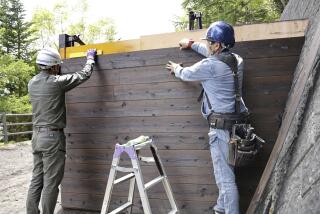Japan eases foreign tourism ban, allows guided package tours

TOKYO — Japan on Friday eased its borders for foreign tourists and began accepting visa applications, but only for those on guided package tours who are willing to follow mask-wearing and other anti-COVID measures.
The first arrivals under the relaxed rules are not expected until late June at the earliest, even though airport immigration and quarantine officials stood by Friday for any possible arrivals.
As the country cautiously tries to balance business demands and infection concerns, the Japan Tourism Agency said tourist groups were being accepted from 98 countries and regions, including the U.S., Britain, China, South Korea, Thailand and Singapore, which are deemed as having low infection risks.
Japan’s partial resumption of international tourism, which was halted during the COVID-19 pandemic, is being carried out under guidelines based on an experiment conducted in late May. That experiment involved about 50 participants, mostly tour agency employees from Australia, Singapore, Thailand and the U.S.
In one case, a tour for a four-member group was canceled when one of the participants tested positive for the coronavirus after arriving in Japan.
“We expect the resumption of inbound tourism will help stimulate the local economy,” Tetsuo Saito, the government minister for land, infrastructure, transportation and tourism, told reporters Friday. “We will continue to make effort to recover demand for tourism while balancing anti-infection measures and social and economic activities.”
Hundreds of thousands of foreigners have been denied entry to study, work or visit families in Japan, leaving many frustrated and at a loss.
Under the guidelines, participants are requested to wear face masks most of the time and to purchase insurance to cover medical costs in case they contract COVID-19. The rules don’t set a cap on the number of people in a group, but tour guides must be present throughout the tour.
After facing criticism that its strict border controls were xenophobic, Japan began easing restrictions earlier this year. On June 1, it doubled its cap on daily entries to 20,000 people a day, including Japanese citizens, foreign students and some business travelers.
The daily limit will include the package-tour participants for the time being, and officials say it will take some time before foreign visitors can come to Japan for self-guided individual tourism.
Business groups based in Japan representing the Group of 7 leading industrialized nations and the European Union welcomed Japan’s gradual resumption of foreign tourism, but in a joint statement called on the government to “to further ease border-control measures to facilitate an environment where people, goods, money and digital technologies can move freely, thus advancing Japan’s economic growth.”
Kane Tanaka, recognized by Guinness World Records as the world’s oldest person, died months short of achieving her goal of reaching the age of 120.
They called on Japan to follow the example of other G-7 countries and resume individual tourism, eliminate testing at airports, lift the daily entry cap and resume international flights at more than a dozen regional airports.
Japan’s inbound tourism business has lain dormant during the pandemic, and even though the country welcomes tourists and their spending, infection concerns persist among Japanese, especially in popular tourist destinations.
Unlike in most Western countries where mask-wearing has largely been abandoned, most people in Japan continue to wear them even in situations where they are no longer requested, such as outdoors in uncrowded settings.
Japan is reporting more than 10,000 new COVID-19 cases daily, though the number in Tokyo is below 2,000.
News Alerts
Get breaking news, investigations, analysis and more signature journalism from the Los Angeles Times in your inbox.
You may occasionally receive promotional content from the Los Angeles Times.
The latest mask-wearing rules call for people to wear them on public transportation systems, in hospitals and other public facilities. People can doff their masks outdoors when others are not around or talking loudly.
It’s unclear how popular the package-tour option will be with foreign tourists, most of whom have to apply for tourist visas that can take weeks to obtain. But the yen is trading at 20-year lows against the U.S. dollar and is weak against other major currencies, which would make traveling in the high-cost country something of a relative bargain.
Foreign tourist arrivals fell more than 90% in 2020 from a record 31.9 million the year before, almost wiping out the pre-pandemic inbound tourism market of more than $30 billion.
More to Read
Sign up for Essential California
The most important California stories and recommendations in your inbox every morning.
You may occasionally receive promotional content from the Los Angeles Times.












